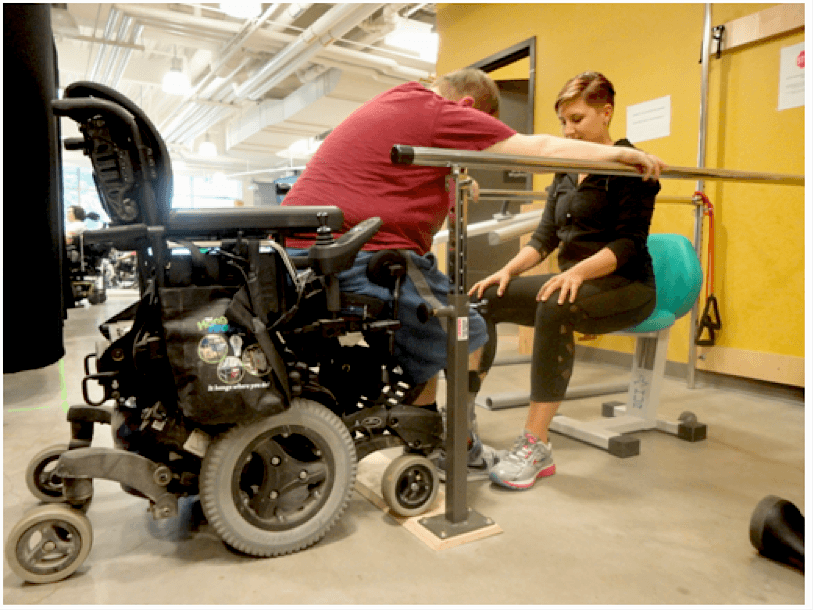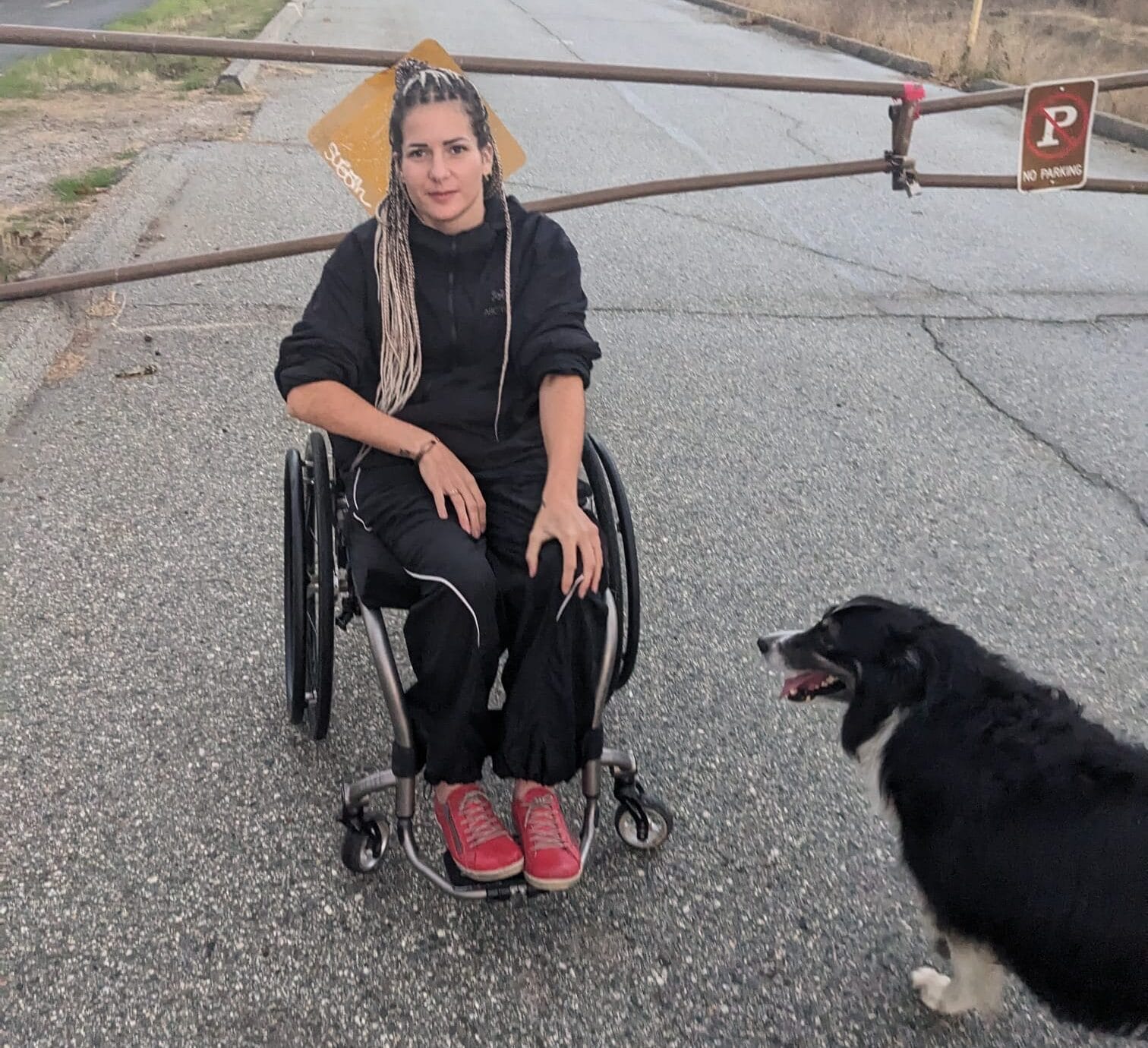It’s that time of year again. A new year means new resolutions to ‘get fit’ and hit the gym. Juicing phases, fad diets and one-off ‘cleanses’ are all the rage, but statistics show that most New Year’s goals end in failure due to their unrealistic nature. Let’s fix that.
Personal Trainer and SCI fitness expert Megan Williamson shares 11 tips on how to succeed this New Year and achieve a healthier you!

1. Make a SMART Goal
The biggest reason people fall off their goal wagon is because they choose an unrealistic goal. Instead, baby steps to change the small habits will accumulate over time to create huge results. The easier we make the goal, the better chance we have of sticking to it! Start by writing down your goal. Then, ask yourself if it is a SMART goal: Specific, Measurable, Attainable, Realistic, and Time-based
2. Drink More Water
Drinking water not only supports kidney and bladder function, but it also makes it easier to maintain weight by reducing cravings and improving your energy. As an added bonus, squeeze some fresh lemon into your water—this can help manage UTI infections by creating an acidic environment in which bacteria cannot thrive.
3. Keep a Journal
Several research studies have shown that people who keep track of their exercise and eating habits have more success than those who don’t. To do this, grab a notebook and log your daily activity and food for one full week. Review it and look to see where improvements can be made for the following week. This is a really valuable strategy when trying something new as it brings awareness to your new habit.
Make SMART Goals: Specific, Measurable, Attainable, Realistic, and Time-based.
4. Prioritize More Sleep
Sleep is when our body repairs and recovers from mental and physical stress. Sometimes we have every intention of going to bed at a decent hour, but we end up sitting in bed watching TV or working on our electronic devices until late hours of the night. The best way to prepare for sleep is with a quiet, cool, dark, distraction-free room and a worry-free mind. If you find that spasticity or pain is what keeps you up at night, prioritizing a nap during the day may help get you that extra hour or so of sleep that you need.
5. Plan Ahead
Success begins with planning. The phrase “fail to plan and you plan to fail” could not ring more true when it comes to eating and exercise habits. If you know you have a busy week ahead, prepare some healthy, portable snacks to take with you on the go. Likewise, if you know you are going to be travelling and away from your exercise routine, look up the accessibility of your destination so you can plan out some exercises and stay on track with your fitness goals.

6. Make Yourself Accountable
There are days when I wake up and the last thing I want to do is go work out at the gym. On days like that, I am so thankful to have my workout buddy. Once I get to the gym and I see how pumped she is, my love of working out shines through and I become motivated again. It is actually these days when I feel like I have pushed the hardest. Positive energy is contagious.
7. Set Appointments—and Keep Them
Workout buddies can come in many different forms—a friend, personal rehab coach, specialized personal trainer, or a kinesiologist. By scheduling a workout date, not only will you have someone motivating you through a workout session, but having an appointment set with a pal or professional will motivate you to not hit the snooze button!
8. Increase your Vegetable Intake
Most people that have a spinal cord injury expend much lower energy than those who are ambulatory. This means that less food is needed to sustain energy levels, and less food means it’s much harder to meet the daily requirements of essential vitamins and minerals that the body needs. This is where the green stuff comes in! Vegetables are not only rich in antioxidants, vitamins and minerals, but they are low in calories relative to their volume (due to the high fiber and high water content). So, start filling your plate! The more colourful, the better!
Fitness is a lifelong journey–not an event. Forgive yourself and enjoy the journey!
9. Get a Mentor
It is always good to have a role model to look up to that will continue to inspire you through your fitness journey. This can be anyone from your fitness coach, your physical therapist, or even someone from the Canadian Olympic team that you enjoy watching on TV! Find someone that inspires you and drives you to do your best.
10. Aim for ‘Better’ Instead of ‘Perfect’
Sometimes we get down on ourselves for not following a specific meal plan or for not getting to the gym as many times a week as we wanted. This can lead to an ‘all or nothing’ attitude, which can cause damage. Let’s look at real life: commuting in traffic can make you miss a gym appointment, being stuck in a meeting means little time to have a proper lunch, and last minute plans can interrupt your schedule. This is life and these things happen. Recognize your efforts and do your best in the given situation.
11. Learn to Forgive Yourself
In some situations, we consciously decide to derail from an eating program or workout program simply because we feel like it. This can be due to stress, emotions or environmental influence. Usually guilty feelings follow and we tend to carry it into our day. The best way to handle these feelings is to accept the choice you made, and give yourself a clean slate. Start fresh with your next meal or your next day of exercise. We are all human and ‘fitness’ is a lifelong journey—not an event! Forgive yourself and enjoy the journey!
Want to start getting fit? Book a one-on-one training session with Megan today!
This blog post was sponsored by Ocean Rehab & Fitness



